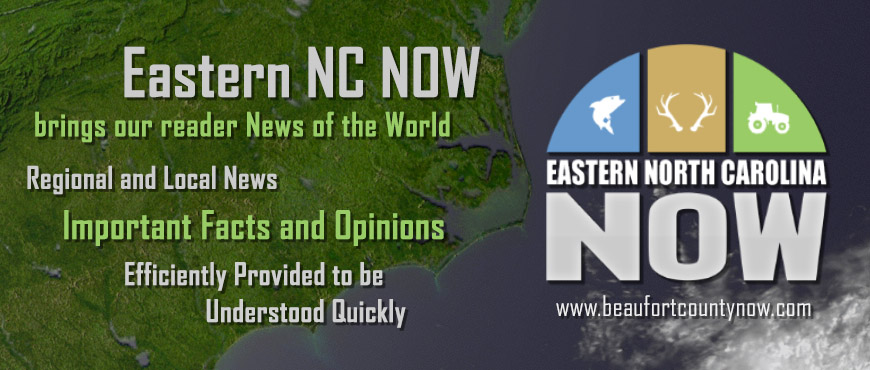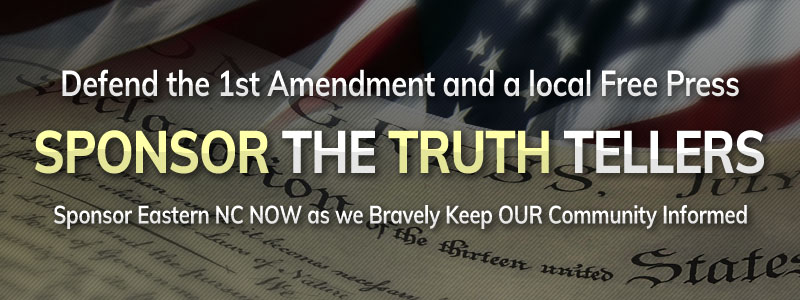Stewards of the Visual Exposition
Budget Crisis Didn't Occur
Publisher's note: This article appeared on John Hood's daily column in the Carolina Journal, which, because of Author / Publisher Hood, is linked to the John Locke Foundation.
 RALEIGH — A funny thing has happened on the way to North Carolina's great budget crisis of 2015.
RALEIGH — A funny thing has happened on the way to North Carolina's great budget crisis of 2015.
Well, strictly speaking, what happened is funny if you are on the Right side of the political spectrum. If you are a liberal activist or Democratic politician, the emotions you may be feeling right now are frustration, disappointment, perhaps even embarrassment.
Last fall, folks on the Left began pointing to monthly reports on General Fund revenue collections from the office of State Controller Linda Combs. The reports showed that income tax revenue, in particular, was lagging behind the state's original projections. The gap wasn't gigantic in dollars, it being early in the 2014-15 fiscal year, but the percentage difference was noticeable.
It would have been wise, given the circumstances, simply to note the discrepancy and argue for prudence as the rest of the fiscal year unfolded. Because the 2014 tax year was the first one after the passage of major tax reforms in 2013, some differences between projected and actual revenue would have been unsurprising. North Carolina's recent history shows that whenever state lawmakers enact major changes in tax policy, there is a potential for error in revenue forecasting. Models for predicting the future are, inevitably, based on experience. Relationships among variables that might have been stable in the past may no longer hold under new policies.
In 1989, for example, the General Assembly passed the Tax Fairness Act with bipartisan majorities. Its purpose was to update the state income tax code after years of changes in Washington, which had included lower marginal rates and the indexation of the federal code to inflation. North Carolina had never indexed its rates, deductions, and exemptions to inflation, meaning that many families of low-to-moderate incomes were paying higher tax rates than the framers of North Carolina's income tax had originally intended.
The Tax Fairness Act corrected some of the damage caused by such "bracket creep," although it didn't actually index North Carolina's tax code (that would come later, in the 1990s). The point here is that according to the official revenue forecasts in 1989, the Tax Fairness Act was supposed to be revenue neutral. It turned out not to be. By the second full year of implementation, 1991, fiscal analysts estimated that the bill had actually reduced state revenue from the baseline by around $100 million. Some put the figure much higher, at $300 million, the equivalent of about $520 million today.
My point is that those possessing a knowledge of North Carolina's fiscal history and a modicum of common sense would certainly have noted the revenue-collection gap in late 2014 but not jumped to any specific conclusions about it. Perhaps the fiscal impact of the 2013 tax-reform bill had been inadvertently underestimated, in which case Gov. Pat McCrory and the legislature would have had to decide how to respond in 2015. Or perhaps the early indications of a fiscal gap wouldn't prove to be predictive at all for the entire 2014-15 fiscal year — because they had to do mostly with shifting the timing of tax collections, via lower withholding and quarterly tax payments, rather than a true loss of annual revenue to the state.
Unfortunately for the liberals and Democrats in question, they didn't just jump to the worst possible conclusion last year. They dove headfirst into a fetid swamp of apocalyptic rhetoric and conspiracy theories. They predicted a 2014-15 budget gap upwards of $1 billion. Some claimed McCrory and the GOP legislature had purposefully used a rosy scenario to justify their 2013 tax reform — and would then use the subsequent deficits to justify more budget cuts.
It turns out, however, that the issue was indeed largely one of revenue timing, not annual collections. According to the latest report, North Carolina's General Fund tax revenue ran 69.9 percent of the forecast amount through March — about the same as last year's 70 percent. And total General Fund revenues aren't down. They're up $257 million over the same period in 2013-14.
The catastrophic hit here was not to the state budget. It was to the Left's credibility.
Go Back

John Hood, chairman of the John Locke Foundation.
Well, strictly speaking, what happened is funny if you are on the Right side of the political spectrum. If you are a liberal activist or Democratic politician, the emotions you may be feeling right now are frustration, disappointment, perhaps even embarrassment.
Last fall, folks on the Left began pointing to monthly reports on General Fund revenue collections from the office of State Controller Linda Combs. The reports showed that income tax revenue, in particular, was lagging behind the state's original projections. The gap wasn't gigantic in dollars, it being early in the 2014-15 fiscal year, but the percentage difference was noticeable.
It would have been wise, given the circumstances, simply to note the discrepancy and argue for prudence as the rest of the fiscal year unfolded. Because the 2014 tax year was the first one after the passage of major tax reforms in 2013, some differences between projected and actual revenue would have been unsurprising. North Carolina's recent history shows that whenever state lawmakers enact major changes in tax policy, there is a potential for error in revenue forecasting. Models for predicting the future are, inevitably, based on experience. Relationships among variables that might have been stable in the past may no longer hold under new policies.
In 1989, for example, the General Assembly passed the Tax Fairness Act with bipartisan majorities. Its purpose was to update the state income tax code after years of changes in Washington, which had included lower marginal rates and the indexation of the federal code to inflation. North Carolina had never indexed its rates, deductions, and exemptions to inflation, meaning that many families of low-to-moderate incomes were paying higher tax rates than the framers of North Carolina's income tax had originally intended.
The Tax Fairness Act corrected some of the damage caused by such "bracket creep," although it didn't actually index North Carolina's tax code (that would come later, in the 1990s). The point here is that according to the official revenue forecasts in 1989, the Tax Fairness Act was supposed to be revenue neutral. It turned out not to be. By the second full year of implementation, 1991, fiscal analysts estimated that the bill had actually reduced state revenue from the baseline by around $100 million. Some put the figure much higher, at $300 million, the equivalent of about $520 million today.
My point is that those possessing a knowledge of North Carolina's fiscal history and a modicum of common sense would certainly have noted the revenue-collection gap in late 2014 but not jumped to any specific conclusions about it. Perhaps the fiscal impact of the 2013 tax-reform bill had been inadvertently underestimated, in which case Gov. Pat McCrory and the legislature would have had to decide how to respond in 2015. Or perhaps the early indications of a fiscal gap wouldn't prove to be predictive at all for the entire 2014-15 fiscal year — because they had to do mostly with shifting the timing of tax collections, via lower withholding and quarterly tax payments, rather than a true loss of annual revenue to the state.
Unfortunately for the liberals and Democrats in question, they didn't just jump to the worst possible conclusion last year. They dove headfirst into a fetid swamp of apocalyptic rhetoric and conspiracy theories. They predicted a 2014-15 budget gap upwards of $1 billion. Some claimed McCrory and the GOP legislature had purposefully used a rosy scenario to justify their 2013 tax reform — and would then use the subsequent deficits to justify more budget cuts.
It turns out, however, that the issue was indeed largely one of revenue timing, not annual collections. According to the latest report, North Carolina's General Fund tax revenue ran 69.9 percent of the forecast amount through March — about the same as last year's 70 percent. And total General Fund revenues aren't down. They're up $257 million over the same period in 2013-14.
The catastrophic hit here was not to the state budget. It was to the Left's credibility.
| Man Charged with NC Murders was Erroneously Shielded from Deportation Despite Gang Ties | Carolina Journal, Editorials, Op-Ed & Politics | Federal Justices Unsure About N.C. Districts |
Latest Op-Ed & Politics
|
Governor expected to sign into law
Published: Friday, April 26th, 2024 @ 1:48 pm
By: John Steed
|
|
Atheist Soros, although born Jewish, was Nazi collaborator in Hungary in WWII
Published: Friday, April 26th, 2024 @ 11:58 am
By: John Steed
|
|
anti-immigration conservative nationalist beats Social Democrat incumbent 2 to 1
Published: Friday, April 26th, 2024 @ 9:19 am
By: John Steed
|
|
protecting children and parents from gender ideology promoters
Published: Friday, April 26th, 2024 @ 6:45 am
By: John Steed
|
|
Biden wants to push this in public schools and Gov. deSantis says NO
Published: Thursday, April 25th, 2024 @ 9:19 pm
By: John Steed
|
|
eve 45% of Latinos support mass deportation
Published: Thursday, April 25th, 2024 @ 12:40 pm
By: John Steed
|
|
this at the time that pro-Hamas radicals are rioting around the country
Published: Thursday, April 25th, 2024 @ 8:01 am
By: John Steed
|
|
Pro death roundtable
Published: Wednesday, April 24th, 2024 @ 12:39 pm
By: Countrygirl1411
|
|
populist / nationalist anti-immigration AfD most popular party among young voters, CDU second
Published: Wednesday, April 24th, 2024 @ 11:25 am
By: John Steed
|
|
political scheme behhind raid on Mar-a-Lago
Published: Wednesday, April 24th, 2024 @ 9:16 am
By: John Steed
|
|
how many of these will come to North Carolina?
Published: Tuesday, April 23rd, 2024 @ 1:32 pm
By: John Steed
|
|
Barr had previously said he would jump off a bridge before supporting Trump
Published: Tuesday, April 23rd, 2024 @ 11:37 am
By: John Steed
|
























